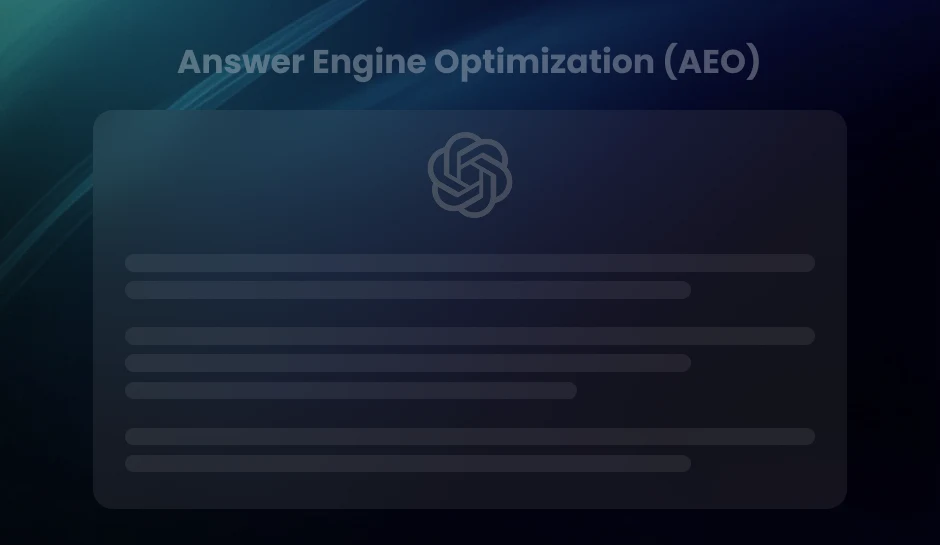
Understanding Google Attribution Tool and Its Role in Strategy Optimization
Comprehend the power of Google Attribution Tool to optimize your marketing strategy with data-driven insights. By tracking customer journeys across multiple channels, businesses can make informed decisions, streamline workflows, and maximize ROI. This comprehensive tool integrates seamlessly with Google Ads and Analytics, enhancing ad performance and boosting campaign effectiveness.
Marketing attribution serves as the analytical backbone for businesses aiming to optimize their campaigns. By attributing conversions and sales to the right touchpoints, marketers fine-tune strategies, allocate budgets effectively, and increase return on investment. At the core of attribution is data, dissected to reveal which channels and messages resonate most with audiences and contribute significantly to the final conversion.
Google Attribution Tool: A Distinct Approach to Measuring Impact
Among the plethora of attribution tools, the Google Attribution Tool emerges as a formidable asset known for its seamless integration with other Google services. This integration helps unify data streams and provides a coherent view of the customer journey, enhancing the accuracy and reliability of insights.
Navigating the complex multichannel landscape becomes more straightforward when using the Google Attribution Tool due to its deep connections with Google Analytics and Ads, enabling data to flow and inform decisions across the marketing ecosystem.
Streamlining Measurement Through Integration with Google Platforms
For businesses entrenched in Google’s infrastructure, the integration of Google Attribution Tool with Analytics and Ads is a game-changer. This convergence allows for the immediate application of insights to marketing activities.
It aids in the adjustment of campaigns in real-time, which improves performance metrics and allows advertisers to swiftly pivot in response to consumer behaviors, ensuring that they are always a step ahead in a competitive landscape.
The Basics of Urchin Tracking Module (UTM)
Google’s Urchin Tracking Module, or UTM for short, enables meticulous tracking of the origin and behavior of traffic to a website. These parameters, when appended to a URL, work seamlessly with the Google Attribution Tool, allowing marketers to dissect the effectiveness of each digital marketing effort. Acquisition channels, campaign names, and more are decoded to reveal the journeys users take to reach and engage with online content.
What UTM is and how it works with the Google Attribution Tool
Comprising a set of five variant URL parameters, UTM provides granular details about traffic sources. Each parameter offers a different data point: ‘utm_source’ identifies which site sent the traffic, ‘utm_medium’ specifies the type of link used, ‘utm_campaign’ captures the specific promotion or campaign, ‘utm_term’ notes the keywords for paid search, and ‘utm_content’ differentiates similar content within the same ad or promotion. Google Attribution Tool consumes this data, assigning credit to the touchpoints influencing a conversion.
Setting up UTM parameters for accurate tracking
Accurate UTM configuration mandates a systematic approach. Users should employ a consistent naming convention to prevent discrepancies that cloud data analysis. Tools such as the Google Campaign URL Builder can facilitate this process. By entering campaign details into the tool, it generates a URL with the requisite UTM parameters, ready for use in your marketing communications.
Examples of UTM tracking in action
Diverse applications for UTM tracking abound, providing insights into user behavior and campaign performance. Consider an email campaign designed to promote a new product. By tagging links with UTM parameters that categorize traffic by source, medium, and campaign name, marketers can observe how many clicks translated into website visits or product purchases. This data serves as a clear indicator of the campaign’s impact.
- Seeing UTM parameters in use, one might notice URLs such as ‘example.com/product?utm_source=newsletter&utm_medium=email&utm_campaign=product_launch’, indicating a link accessed from an email about a product launch.
- Monitoring social media performance becomes more efficient, discerning which platforms lead to the most engagement or conversions.
- Assessing the effectiveness of various marketing materials, whether A/B testing ad copy or visuals, UTM parameters facilitate swift and accurate performance analysis.
Pro Tip- Maintain a standardized UTM naming convention across all campaigns to ensure clean, consistent data for accurate analysis and seamless attribution in Google Attribution.
Navigating Digital Marketing Analytics with Google Attribution Tool
Google Attribution Tool transforms the way businesses interpret user interactions by providing a comprehensive view of the customer journey. Leveraging insights from Google’s extensive data network, the tool facilitates a nuanced understanding of the multi-channel funnel. This becomes a linchpin for informed decision-making.
Key Features of Google Attribution Tool for Data Analysis
- Integration with Google Analytics and AdWords for seamless data synchronization.
- Multi-touch attribution models that offer granular insight into the customer journey.
- User-friendly dashboards displaying conversion paths and touchpoint effectiveness.
With a raft of functionalities, users can discern the impact of their marketing efforts on consumer behavior. Cross-device tracking is streamlined, ensuring that every interaction, irrespective of platform or device, is accounted for.
Handling Data from Multiple Channels
Google Attribution Tool adeptly handles data influx from various channels, allowing for simultaneous analysis of organic, paid, and social media traffic. Diverse data streams coalesce within the platform, where they are broken down and attributed to different stages of the sales funnel. This coordination of multi-channel data illumination allows businesses to refine their marketing strategy in alignment with observed patterns.
The Advantage of Real-Time Insights for Businesses
Businesses thrive on agility and the capacity to adapt strategies swiftly. Google Attribution Tool arms businesses with real-time data insights, enabling rapid response to market dynamics. Real-time analytics empowers marketers to optimize campaigns on the fly, thus maximizing the return on investment. By harnessing these up-to-the-minute analytics, companies ensure that resources are allocated to the most effective channels at the right times.
Pro Tip- Leverage real-time insights from the Google Attribution Tool to identify underperforming channels early and reallocate the budget to high-converting touchpoints for maximum ROI.
Mastering Multi-Touch Attribution in Google Attribution Tool
Pioneering the most accurate assessments of marketing touchpoints, the Google Attribution Tool allows various attribution models to be utilized, each playing a pivotal role in interpreting consumer behavior. Through assessing different models, companies track the influence of each marketing effort, leading to informed strategic decisions.
Exploring Different Types of Attribution Models Available in Google Attribution Tool
Google Attribution Tool provides a range of models, from the traditional ‘Last Click’, which credits the final touchpoint, to more complex systems such as ‘Data-Driven’ attribution. The ‘First Click’ highlights the initial interaction, ‘Linear’ distributes credit evenly across all touchpoints, ‘Time Decay’ favors recent interactions, and ‘Position Based’ privileges the first and last interaction with additional credit allocated to middle touchpoints.
Understanding the Impact of Each Model on Your Data
All models sculpt your data’s narrative uniquely. ‘Last Click’ undervalues the customer journey’s commencement stages, whereas ‘First Click’ might inflate early-stage interactions. ‘Linear’ offers a democratic perspective but may obscure impactful moments. ‘Time Decay’ aligns with behavior emphasizing immediacy, and ‘Position Based’ provides balance yet may not do justice to significant but less prominent interactions.
Customizing Models to Fit Your Business Needs
Particular business scenarios demand tailored approaches. Customizing attribution models facilitates nuanced insights. Adjusting weightings and timeframes to reflect business understanding amplifies the relevance of data outputs. As businesses evolve, so should the customization of models, ensuring a perpetually optimized marketing strategy.
- Review your marketing objectives periodically.
- Assess the journey complexity and buying cycles of your products.
- Analyze historical data to inform adjustments in your attribution model.
By embracing the model that aligns best with your strategy, multi-touch attribution becomes a powerful ally, revealing not just touchpoints, but telling the story of engagement, influence, and conversion.
Unveiling the Power of Conversion Tracking via Google Attribution Tool
Conversion signifies a completed activity, crucial to the success of your marketing efforts, typically characterized as a sale or a lead generation event. Within the Google Attribution Tool, a conversion corresponds to an event signifying the completion of a primary objective; this culminates in a deeper comprehension of the causal relationship between marketing actions and outcomes.
Effective strategies for setting up and monitoring conversions emerge through the Google Attribution Tool platform. These include defining the specific conversion actions you wish to track, embedding the necessary tracking codes on your website, and configuring goals within your Google Analytics account. Having these measures in place ensures that every conversion is accounted for and attributed to the appropriate campaign or touchpoint.
Adopting best practices for assessing conversions through the customer lifecycle is imperative. Interactions at each stage – from initial engagement through to the post-purchase phase – should be scrutinized rigorously with the advanced tracking options available through the Google Attribution Tool. This comprehensive observation reveals pivotal insights into the effectiveness of marketing efforts on each phase of the customer’s journey.
- Analyze the path leading up to conversion across all channels to identify patterns and optimize future marketing endeavors.
- Continuously refine conversion touchpoints, leveraging the rich data amassed through Google Attribution Tool, to boost overall conversion rates.
- Employing a data-centric approach in tracking conversions furnishes objective measurements of how each marketing interaction contributes to sales and other desired outcomes.
Through conversion tracking, Google Attribution Tool furnishes explicit linkages between marketing spend and conversion events, allowing for an expanded understanding of return on investment (ROI) across different marketing channels and activities.
Pro Tip- Regularly audit your conversion tracking setup to ensure accuracy—misconfigured tracking codes or outdated goals can skew data and lead to misguided marketing decisions.
Data-Driven Decision-Making with Google Attribution Tool
Google Attribution Tool offers a treasure trove of data, equipping marketers with a profound understanding of customer behaviors. Armed with this knowledge, the translation of attribution data into decisive marketing strategies becomes an exercise in precision. Marketers can pinpoint the exact moments when intervention can sway customer decisions and enhance the effectiveness of marketing campaigns.
Machine learning algorithms serve as the bedrock for refining data insights within the Google Attribution Tool. These algorithms detect patterns and correlations in vast datasets that would otherwise evade human analysis, thereby ensuring that marketing efforts align with consumer trends and preferences.
The utilization of these insights enables continuous optimization of the marketing mix, driving stronger performance in both the short and long term.
When a marketing team integrates data-driven strategies into campaign management, the impact is clear. Campaigns become more responsive to consumer interactions, and adjustments are based on solid evidence, not mere speculation. Marketers can leverage real-time data to adapt to emerging trends, optimize budget allocation, and tailor messages to resonate more deeply with target audiences.
Delving into campaign analytics through the Google Attribution Tool not only informs smarter decision-making but also drives measurable improvements in campaign performance.
Pro Tip- Leverage machine learning insights from the Google Attribution Tool to predict customer behavior and proactively optimize campaigns—anticipating trends gives you a competitive edge.
Streamlining Workflows with Google Ads Integration
Google Ads and Google Attribution Tool merge to provide marketers with a powerful suite of tools. This connection enhances campaign management by unlocking insights that are otherwise difficult to obtain. The fusion of these platforms empowers users to monitor and adjust marketing strategies efficiently.
Seamless Connection for Enhanced Campaign Management
Users find that the integration of Google Ads with the Google Attribution Tool eliminates redundancies in managing advertising data. Having a unified interface allows for the tracking of user interactions across multiple touchpoints and aligns them with conversion data. Marketers harness this to pinpoint the influence of specific ad interactions on consumer behavior.
Marketing Automation Through Integration
Concurrent data flow between Google Ads and Google Attribution Tool facilitates automation in marketing efforts. By integrating, marketers automate bid adjustments, customize messaging, and optimize budget allocation. This real-time data exchange ensures that marketing initiatives are responsive to user behavior and performance metrics.
Enhancing Ad Performance with Attribution Insights
Attribution data culled from the consumer’s journey informs ad performance modifications. Marketers leverage insights from the Google Attribution Tool to make evidence-based adjustments to campaigns in Google Ads. This adjustment leads to improved targeting, higher conversion rates, and more efficient use of advertising spend.
- Analyzed customer paths translate into informed bidding strategies.
- Attribution data ensures that budgets focus on high-performing channels.
- The iterative process of optimization ensures ongoing improvement of ad efficacy.
Pro Tip- Use attribution insights to fine-tune your Google Ads bidding strategy—prioritize high-performing touchpoints to maximize ROI and reduce wasted ad spend.
Revolutionize Your Marketing With Smart Automation and Attribution Insights
Marketing automation transforms how businesses engage with potential customers by harnessing attribution data to automate repetitive tasks. By integrating Google Attribution Tool data into marketing automation platforms, marketing teams can design actions triggered by specific consumer behaviors, leading to the efficient allocation of resources and consistent messaging across channels.
Integrating Machine Learning for Optimized Marketing Strategies
Advanced machine learning algorithms analyze vast sets of attribution data to identify patterns and predict user behavior. Armed with these insights, marketers customize communication, optimize the timing of outreach efforts, and elevate campaign effectiveness. Automated systems respond dynamically to user interactions, ensuring that potential customers receive relevant information at each touchpoint in their journey.
Targeted Campaigns for Improved User Experience and Conversion Rates
Attribution data not only informs which channels contribute most to conversions but also illuminates the customer’s journey. This clarity allows for the development of highly targeted campaigns that resonate with the audience. By engaging users with personalized content that meets their specific needs and preferences, businesses see a direct impact on user experiences and conversion rates.
Through informed adjustments to marketing automation strategies, companies deliver content that moves users through the funnel more effectively while simultaneously refining the overall strategy with each interaction. This adaptive approach maintains user engagement and guides them toward making informed purchasing decisions.
- Automation shapes each step of the customer’s journey, providing a seamless experience tailored to individual preferences and behaviors.
- Intelligence-driven by attribution data ensures that potential customers encounter the right message at the optimum moment, increasing the probability of conversion.
- Tactical communication, powered by a deep understanding of conversion paths, cements stronger relationships with customers, fostering loyalty and repeat business.
Pro Tip- Leverage attribution-driven automation to personalize messaging at scale—deliver the right content at the right moment to boost engagement and conversions effortlessly.
Maximize Your Ad Spend Efficiency with These Strategies
Accurate advertising cost tracking enables marketers to optimize their ad budgets. Google Attribution Tool simplifies this by providing a comprehensive view of where each dollar contributes most to campaign success. Layering this information with audience insights tailors future campaigns for higher returns on investment.
Track Advertising Costs with Precision
- Assign unique UTM parameters to each campaign. Doing so allows for segmented performance analysis to see which channels and messages drive the most conversions.
- Use the Google Attribution Tool to connect the dots between first clicks and final conversions. You can thereby allocate more budget to the most effective touchpoints in the customer journey.
- Regularly review the Multi-Touch Attribution reports. These provide a full picture of which ads contribute to conversions, informing how to distribute ad spend across channels.
Interpreting Data for Smarter Spending
- Examine cost per action (CPA) metrics within the Google Attribution Tool to determine the true cost of conversion-driving actions. Lower the CPA by phasing out underperforming ads and scaling up those that succeed.
- Analyze the customer path to purchase and identify any patterns. Look for the highest value paths and focus your advertising efforts where they will be most effective.
- Consider lifetime value (LTV) over immediate ROI. Invest in campaigns that may have a higher upfront cost but acquire customers with a higher potential LTV.
Continuous analysis of advertising cost data leads to informed adjustments, ensuring that each ad dollar works harder toward meeting campaign objectives. When advertising costs are scrutinized and optimized, the entire campaign machinery operates with more precision, driving both short-term gains and long-term growth.
Do you question where to reduce spending or invest more? Leverage Google Attribution Tool’s data visualization tools. Graphs and charts can spotlight trends and outliers in spending, providing a visual cue for where adjustments might be most impactful.
Mixing these techniques will often result in a robust advertising cost analysis. This analysis not only reveals the surface-level performance of campaigns but also influences strategy development across the marketing mix, leading to a refined, performance-driven approach in future advertising endeavors.
Pro Tip- Use Google Attribution Tool’s data visualization to quickly spot trends—invest more in high-performing channels and cut spending on underperformers for maximum ROI.
Unlock the Full Potential of Your Marketing Efforts
Leveraging the Google Attribution Tool empowers businesses to deploy data with precision, leading to insightful marketing strategies and operational excellence. By synthesizing interaction touchpoints across multiple channels into cohesive analytics, the Google Attribution Tool delivers clarity on the customer journey, enabling advertisers to optimize their campaigns with accuracy.
With the integration of this comprehensive tool, marketers streamline decision-making processes, tailoring engagements and investment to peak performance metrics. The result is not only an improvement in conversion rates but also an enhancement in the understanding of how different channels contribute to business growth.
- Fully understanding the digital landscape sets the stage for targeted marketing initiatives.
- Insights from the Google Attribution Tool refine customer acquisition and retention, aligning efforts with consumer behavior.
- Adopting this system signifies a leap towards agility, relevance, and competitive edge in the digital sphere.
Reflect upon the analytics and insights that have surfaced. Ascertain how the integration of these findings can propel your marketing strategy forward. Recognize that comprehensiveness in your analytical tools is not just an option but a necessity in the path to market leadership.
Key Takeaways
- Marketing attribution helps businesses identify high-performing channels, allocate budgets effectively, and maximize ROI by understanding the customer journey.
- Google Attribution Tool enhances data accuracy by integrating with Google Analytics and Ads, providing a comprehensive view of marketing performance across multiple touchpoints.
- Properly structured UTM parameters enable precise tracking of traffic sources, campaign effectiveness, and audience behavior, improving data-driven decision-making.
- Multi-touch attribution models and real-time insights empower marketers to refine campaigns dynamically, improving targeting, engagement, and conversion rates.
Get hands-on assistance and experience working with the Google Attribution Tool with DiGGrowth.
Just write to us at info@diggrowth.com and we’ll get back to you.
Ready to get started?
Increase your marketing ROI by 30% with custom dashboards & reports that present a clear picture of marketing effectiveness
Start Free Trial
Experience Premium Marketing Analytics At Budget-Friendly Pricing.

Learn how you can accurately measure return on marketing investment.
Additional Resources
Don’t Let AI Break Your Brand: What Every CMO Should Know
AI isn’t just another marketing tool. It’s changing...
Read full post postFrom Demos to Deployment: Why MCP Is the Foundation of Agentic AI
A quiet revolution is unfolding in AI. And...
Read full post postAnswer Engine Optimization (AEO): The New Frontier of SEO in 2025
As digital experiences continue to evolve, so does...
Read full post postFAQ's
Marketing attribution identifies which touchpoints in a customer’s journey contribute to conversions and sales. Understanding the impact of different marketing channels is essential for optimizing marketing strategies, allocating budgets effectively, and improving return on investment (ROI).
Google Attribution Tool integrates with Google Analytics and Google Ads to provide a unified view of customer interactions across multiple channels. This helps businesses track the effectiveness of their campaigns, analyze consumer behavior, and make data-driven decisions to improve marketing performance.
UTM parameters are tracking codes added to URLs that help marketers identify the source, medium, campaign, keyword, and content of incoming traffic. Google Attribution Tool uses this data to assign credit to various touchpoints, enabling precise performance measurement of digital marketing efforts.
Google Attribution Tool offers multiple models, including: Last Click (credits the final touchpoint) First Click (credits the initial touchpoint) Linear (evenly distributes credit across all touchpoints) Time Decay (assigns more credit to recent interactions) Position-Based (prioritizes first and last interactions) Data-driven (uses AI to allocate credit based on real data patterns)
Businesses can optimize their strategies by analyzing attribution data to determine high-performing channels, refining ad spend allocation, adjusting messaging based on user engagement, and leveraging real-time insights to make data-driven campaign adjustments.


